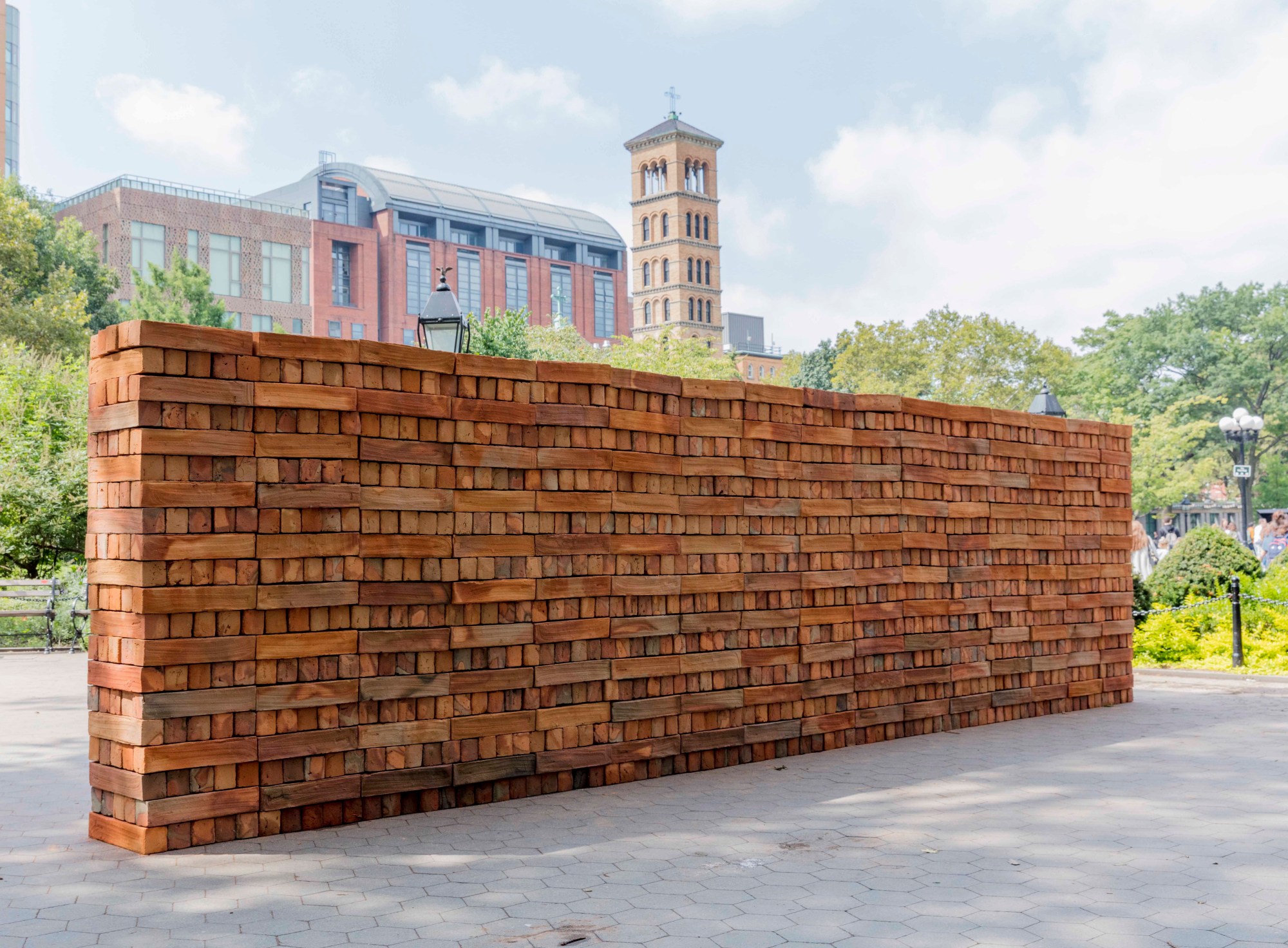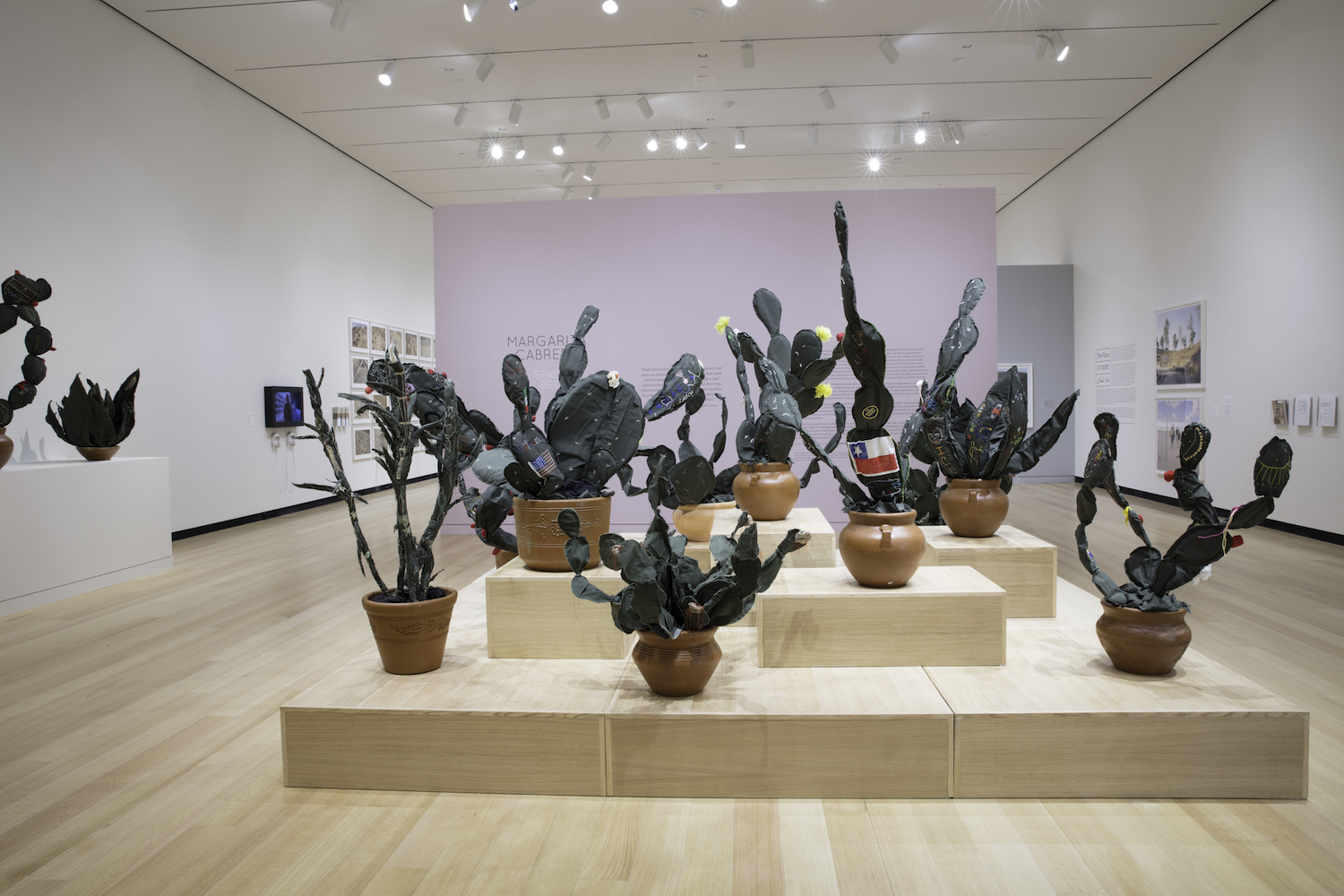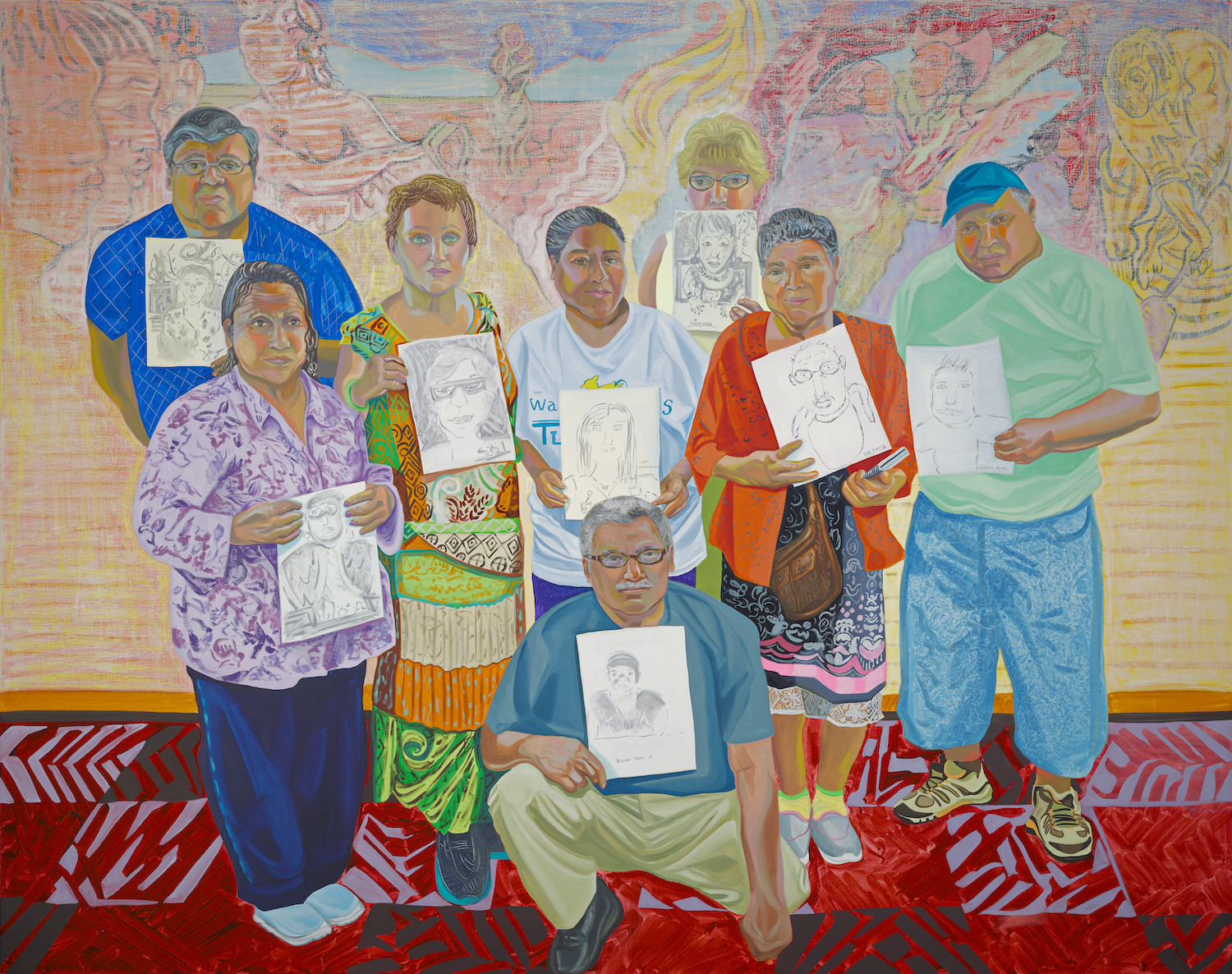“When it comes to migration, the discourse rarely focuses on the stories of real people trying to succeed,” said the artist Felipe Baeza, who emigrated to the U.S. from Mexico as a child like many of the children currently being held in detention centers under the Trump administration. In the span of the past five weeks, more than 2,300 children were ripped away from their parents at the U.S. border.
Immigrants currently make up over 15% of the population of the United States, among them lawyers, doctors, teachers, and day-workers whose stories of success are largely obscured by the narratives of criminality and punishment that dominate the daily news cycle.
In an increasingly xenophobic America, artists are among the groups of people carving a space of agency for migrants, both personally and politically, through complex, multi-dimensional works like Judith Baca’s Great Wall of Los Angeles, a painted mural chronicling American abuses throughout history that stretches for half a mile, or Andrea Bowers’s delicate monument to the people who died while trying to cross the Mexico-U.S. border, No olvidado.
“I believe art has a crucial role to play in transforming, redefining, and re-imagining the global phenomenon of migration,” Baeza said. Here, we feature the works of a few of the Latin and Latin-American artists shaping the conversation around immigration, inclusion, and representation in visual art.

Bosco Sodi
On the morning of September 7, a nearly six-foot-high, twenty-six-foot-long wall was erected in Washington Square Park for one day only. When the work was completed around 3 pm, people of all nationalities, ethnicities, and social classes were encouraged to dismantle the installation and take a brick home with them, a physical and symbol breaking down of walls that landed back when Trump threatened to take office.
The Brooklyn-based Mexican artist Bosco Sodi (best known for his richly colored and textured large-scale paintings inspired by his Mexican heritage) had erected his first public art installation in New York. Muro, which translates to “wall,” was composed of 1,600 clay bricks fired by hand at the artist’s studio in Mexico and transported to New York along the same route an illegal immigrant might take. In an interview with Artforum, Sodi said the project was born out of conversations with the craftsmen who work in the area near Casa Wabi — his foundation in Oaxaca, Mexico — many of whom had lived in the United States illegally at some point in their lives. Especially today, Sodi’s Muro is a necessary reminder that all obstacles have the potential to be dismantled through united forces.

Ramiro Gómez
Ramiro Gómez is an L.A.-based painter born in California to two undocumented Mexican immigrants. He became a mainstay in the L.A. art world for his riffs on David Hockney’s pool paintings back in 2014. While Hockney painted an immaculate world of modernist bliss, Gomez’s work called attention to the dark-skinned workers whose labor is required to maintain it. He re-imagined Hockney’s A Bigger Splash with No Splash, a version that includes workers raking the crystal-clear water for impurities. There were other powerful subversions: Hockney’s Beverly Hills Housewife became Gómez’s Beverly Hills Housekeeper and American Collectors manifested in American Gardeners.
Gómez’s work is a witty homage to the people whose labor is made invisible day after day. In his Melrose series, Gómez draws inspiration from Los Angeles’s huge, essential, and often obscured population of immigrant laborers working behind-the-scenes to maintain movie sets, museums, and palm tree-dotted roads. In another series, titled Large Magazine Paintings, Gómez superimposes acrylic renditions of nannies, cleaning ladies, and gardeners on magazine covers of pristine domestic scenes from Mexico and the United States. One of them is a self-portrait from when the artist himself worked as a live-in nanny for a West Hollywood family, an experience that did much to inform his subsequent artistic practice.

Margarita Cabrera
The constant migration between Mexico and Texas and the dangers of border-crossing inform the work of Mexican-American artist Margarita Cabrera. Space in Between features sculptures of cacti, aloe vera, and agave constructed from sections of U.S. Border Patrol uniforms. With their labels, buttons, and pockets left intact, the uniforms were cut and sewn to duplicate the shapes of desert plants with uncanny resemblance from afar. Up close, stories of immigration make themselves visible.
Embroidered into Cabrera’s sculptures are colorful stitchings of animals, flowers, shining suns, the Mexican flag, and words like “family” and “love,” each panel a unique depiction of a worker’s daily life and unique concept of identity and home. Cabrera, a Mexican immigrant herself, created the sculptures with the help of immigrant seamstresses who attended a series of embroidery workshops she hosted as part of a community outreach program in 2010. The heartbreaking sculptures tell stories of fear, danger, and death, but, like the healing properties of aloe vera, also represent resilience, survival, and success against adversity.

Alfredo Jaar
The Chilean artist Alfredo Jaar has been making art around violations of human rights for a good part of the past three decades. His 1987 animation, A Logo for America, addressed the U.S.’s nativism, ethnocentrism, and its claiming of the identity of the entire American continent as its own. The piece was broadcast on an electronic billboard in Times Square as part of the Public Art Fund’s Messages to the Public series almost three decades ago but has become even more relevant now. In the 42-second sequence, an image of the American flag is followed by a statement contesting its meaning, then an image of the map of the United States precedes the declaration, “THIS IS NOT AMERICA.” America, Jaar lets on at the end, is the entirety of the North and South American Continent.
In another work, a black-and-white photograph from 2018, Jaar imagines Ellis Island as it might look in 2024, a place devoid of any traces of what made it a symbol of hope, tolerance, and solidarity for the millions of immigrants that passed through its doors during the 19th and 20th Centuries.

Aliza Nisenbaum
From 2012 to 2016, Mexico City-born, New York-based artist Aliza Nisenbaum dedicated herself to painting tender portraits of undocumented immigrants from Mexico and Central America. Nisenbaum first volunteered to teach immigrants English through feminist art history at the Cuban artist Tania Bruguera’s community space, Immigrant Movement International, in Queens, New York in 2012. There, she asked many of her students to sit for her portraits. As she forged deeper connections with them, she eventually began painting them, their family members, and their friends in domestic settings.
Nisenbaum’s sensitively rendered portraits resembling those of Alice Neel or Lynette Yiadom-Boakye memorialize her subjects and their daily acts of heroism and resilience — a father and son reading the morning news, sisters watching television, a large family in an embrace. Nisenbaum hovers somewhere between Mexican social realism and politically engaged figurative painting, but the true political power of her work lies in the individuality, complexity, and humanity of the subjects she so lovingly paints.
